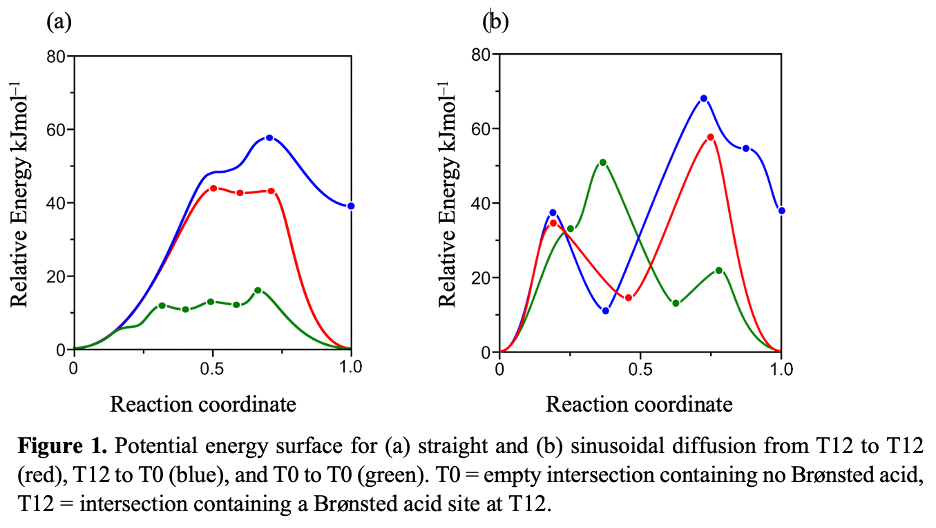Mass transport in zeolites is often limited by intracrystalline diffusion. Understanding these diffusion patterns within zeolite pores is critical to understand its role on reaction and deactivation rates. Previous work on the diffusion of C
6–C
12 methylbenzenes via the sinusoidal and straight channels of silicate-form MFI found that diffusion barriers for these species are consistently lower for straight channel diffusion compared to sinusoidal diffusion, and that these barriers correlate with the critical diameter of the molecule. Here, we employ periodic density functional theory (DFT) calculations to extend our previous work to proton form MFI zeolites. Specifically, we model the diffusion of low critical diameter aromatics (benzene, toluene, xylenes, 1,2,4-trimethylbenzene and 1,2,4,5-tetramethylbenzene) through straight and sinusoidal channels of MFI in the presence of Brønsted acid-sites across all the 12 crystallographically unique T-sites. Preliminary data suggest that the presence of a Brønsted acid site increases diffusion barriers relative to those modeled in Si-form MFI. These increases in barriers occur because protons stabilize arenes in MFI intersections (the reactant state of relevant diffusion pathways) but offer less stabilization to arenes in MFI channels (transition states of diffusion).
So, diffusion barriers in proton-form zeolites are higher because of guest-proton interactions that lower the energy of the reactant state relative to the diffusion transition states, thus resulting in higher barriers. For example, the adsorption energy of benzene at T12 in MFI is 38 kJ mol
−1 more stable than that in Si-form MFI. This results in a corresponding barrier increase of 40 and 18 kJ mol
−1 for straight and sinusoidal diffusion, respectively.


